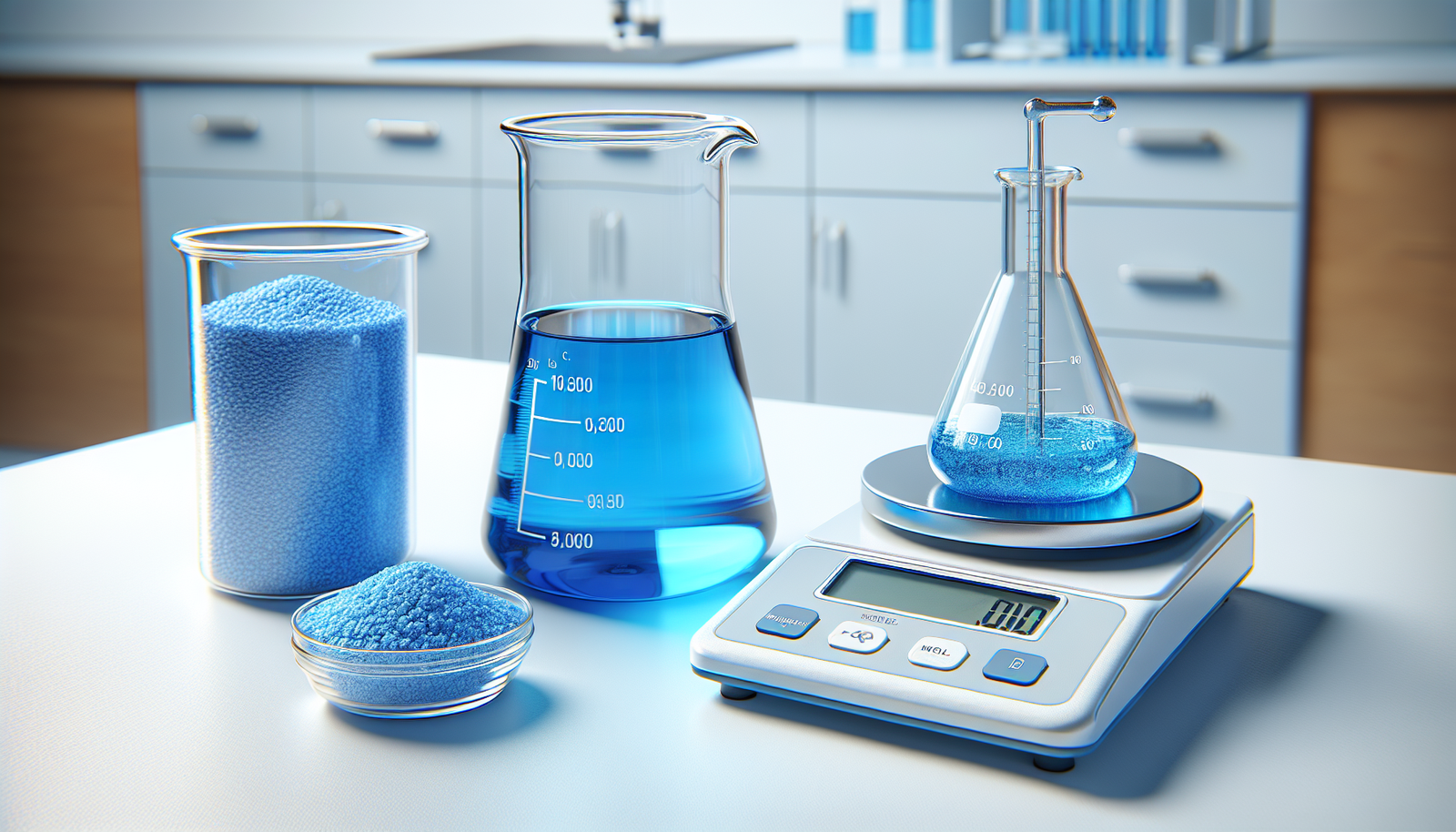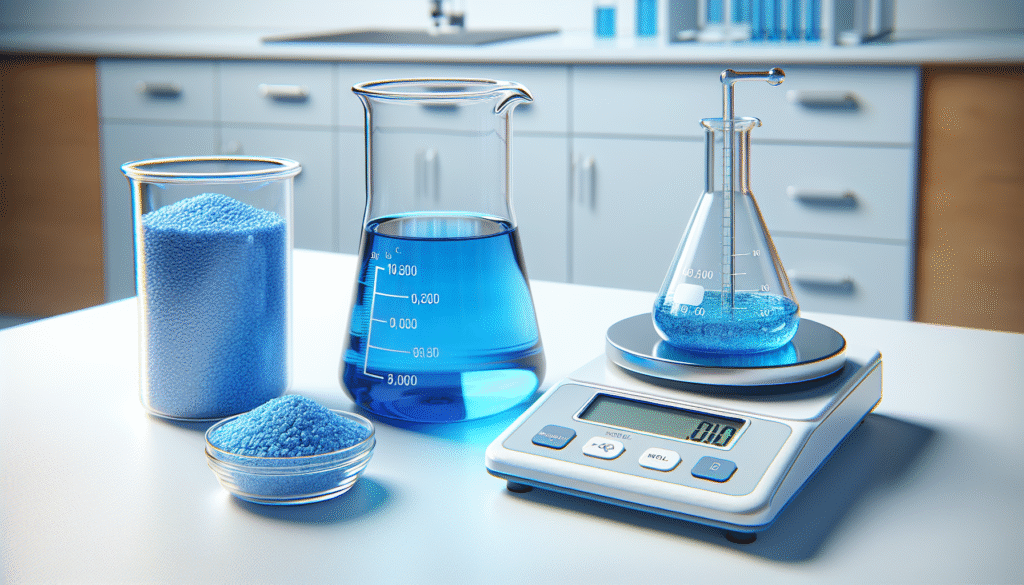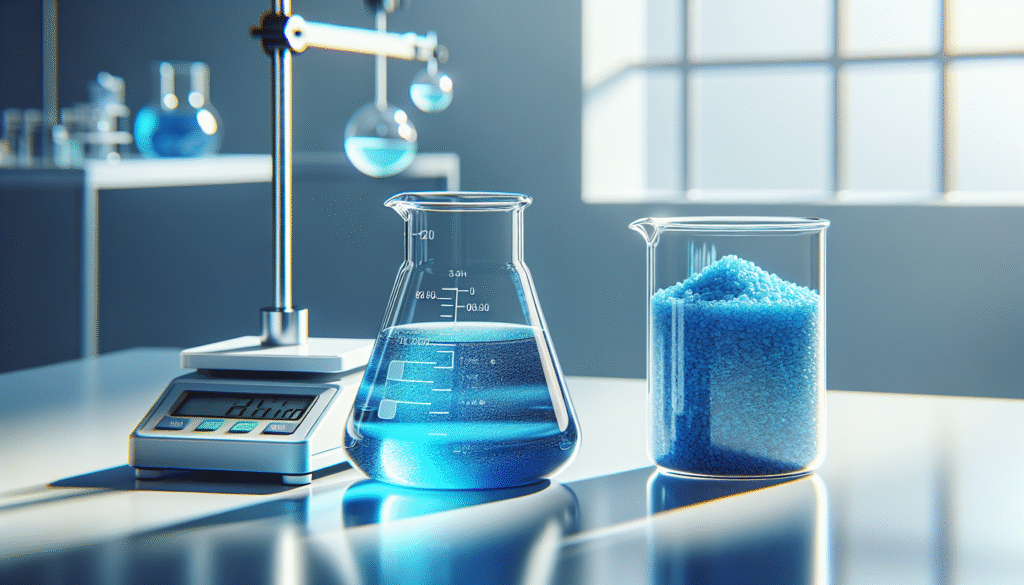
Have you ever found yourself needing a specific solution for a project, perhaps in a laboratory setting, an aquarium, or even for some creative art purposes? If so, understanding how to create your own methylene blue solutions at home can be both beneficial and enlightening. Methylene blue is a versatile chemical compound that serves a range of functions, but preparing it requires precision and care. This guide will take you through the process step by step.
What is Methylene Blue?
Methylene blue is an organic compound that comes in the form of a dye. It is primarily used in biology for staining, in medicine for its antibacterial properties, and in aquaculture to treat fish diseases. Its versatility extends to various fields, making it essential in many settings. Understanding its characteristics is crucial before proceeding with preparation.
Properties and Uses of Methylene Blue
Methylene blue possesses distinct properties, including its vivid blue color and solubility in water. In biology, it is used as a vital stain that helps enhance the visibility of cell structures under a microscope. In the field of medicine, it is employed to treat conditions like methemoglobinemia, and it is also utilized in aquariums to combat fungal infections and other ailments in aquatic life.
Safety Precautions for Handling Methylene Blue
Before you undertake the process of making methylene blue solutions, it is vital to prioritize safety. This chemical can pose risks if not handled correctly.
Personal Protective Equipment (PPE)
When working with methylene blue, always wear appropriate personal protective equipment. This may include:
- Gloves: To protect your skin from exposure.
- Goggles: To shield your eyes from any potential splashes.
- Mask: To avoid inhaling any dust or vapor.
Proper Ventilation
Ensure that you are working in a well-ventilated area. This helps prevent the accumulation of fumes, which may be harmful upon inhalation. If possible, consider utilizing a fume hood.

Required Materials for Making Methylene Blue Solutions
Gathering the necessary materials is essential to ensure a smooth process. Below is a list of commonly needed items:
| Item | Description |
|---|---|
| Methylene blue powder | The primary substance you will dissolve. |
| Distilled water | Used to create the solution. |
| Beaker or measuring cup | For measuring and mixing your solution. |
| Stirring rod or spoon | To ensure adequate mixing. |
| Scale (gram scale preferred) | For accurate measurement of powder. |
| pH strips (optional) | To check the pH level of the solution. |
Acquiring Methylene Blue
Methylene blue powder can typically be purchased from chemical suppliers, online stores, or specialty retailers. Ensure you are sourcing a high-quality product suitable for your intended use.
Step-by-Step Guide to Making Methylene Blue Solutions
Now that you have collected all the necessary materials and equipped yourself with proper safety precautions, you can begin the process of making your methylene blue solution.
Step 1: Measure the Methylene Blue Powder
Begin by determining how much solution you need. A common concentration for general uses is 1%, which corresponds to 1 gram of methylene blue powder dissolved in 100 mL of water. Use the scale to measure the appropriate amount of powder accurately.
Step 2: Prepare the Distilled Water
Next, measure out the necessary amount of distilled water. Using a beaker or measuring cup, pour in 100 mL of distilled water for a 1% solution. Ensure that the container is clean to avoid contamination.
Step 3: Mix the Solution
Add the measured methylene blue powder into the distilled water. Using a stirring rod or a clean spoon, gently stir the mixture until all the powder has completely dissolved. This may take a few minutes, so patience is key.
Step 4: Check the Solution
Once the methylene blue has dissolved, inspect the solution for clarity. A well-mixed solution should appear uniform without any undissolved particles. If needed, continue stirring until the solution is clear.
Step 5: Test the pH (Optional)
Depending on your intended use, testing the pH level of the solution might be beneficial. Methylene blue solutions should ideally be neutral (pH around 7). If you find the solution is too acidic or alkaline, consider adjusting it with small amounts of appropriate acidic or basic solutions.
Step 6: Store the Solution
If you do not use the solution immediately, store it in a dark glass bottle or a colored container to protect it from light, which may degrade the dye. Label the container with the concentration and date of preparation for ease of reference.

Troubleshooting Common Issues
Creating methylene blue solutions can sometimes present challenges. Being aware of possible issues and their solutions allows for a smoother preparation process.
Problem 1: Methylene Blue Not Dissolving
If you notice that the methylene blue is not dissolving properly, ensure that you are using sufficient stirring. Sometimes warming the solution slightly can also help, but be cautious not to boil it.
Problem 2: Unexpected Color Intensity
If the color of your solution seems too concentrated or not as expected, verify that you have accurately measured the methylene blue powder. Adjustments can be made by either adding more water or methylene blue, depending on your needs.
Applications of Methylene Blue Solutions
Understanding how to make methylene blue solutions effectively opens up various applications in different fields:
Biological Research
In biological laboratories, methylene blue is often used as a staining agent for examining cell structures. It enhances visibility during microscopic analysis, helping researchers identify cellular abnormalities.
Medical Uses
In the medical field, methylene blue serves therapeutic roles, including the treatment of certain blood disorders. Familiarity with how to prepare the solution ensures that healthcare professionals can administer it when necessary.
Aquaculture
Aquarists often utilize methylene blue as a treatment for fungal infections in fish. Knowing how to prepare appropriate concentrations enables effective treatment while maintaining aquatic health.
Art and Creative Projects
Methylene blue is also used in various art projects, providing vibrant blue hues. Whether you’re painting or creating dyes for fabrics, mastering solution preparation can enhance your creative pursuits.
Environmental Considerations
When working with chemicals, it is essential to consider environmental impact. Methylene blue can pose risks to aquatic life if disposed of improperly.
Safe Disposal
Dispose of any surplus solution in accordance with local regulations. Many areas have specific guidelines for disposing of chemicals. Additionally, never pour methylene blue down the drain without checking local disposal laws, as it can contaminate water supplies.
Effects on Aquatic Life
Methylene blue can be harmful to fish and other aquatic organisms at certain concentrations. If used in aquariums, always follow dosage guidelines to prevent adverse effects.
Conclusion
Navigating the process of making methylene blue solutions at home requires attention to detail and adherence to safety measures. By understanding the properties, uses, and preparation steps, you can create solutions that serve various purposes in research, healthcare, aquaculture, and creative projects.
As you expand your knowledge and skills in this area, remember that precision in measurement and mindful handling will yield the best results. Whether for scientific inquiry or artistic expression, mastering the art of preparing methylene blue solutions enhances your capabilities and enriches your projects.